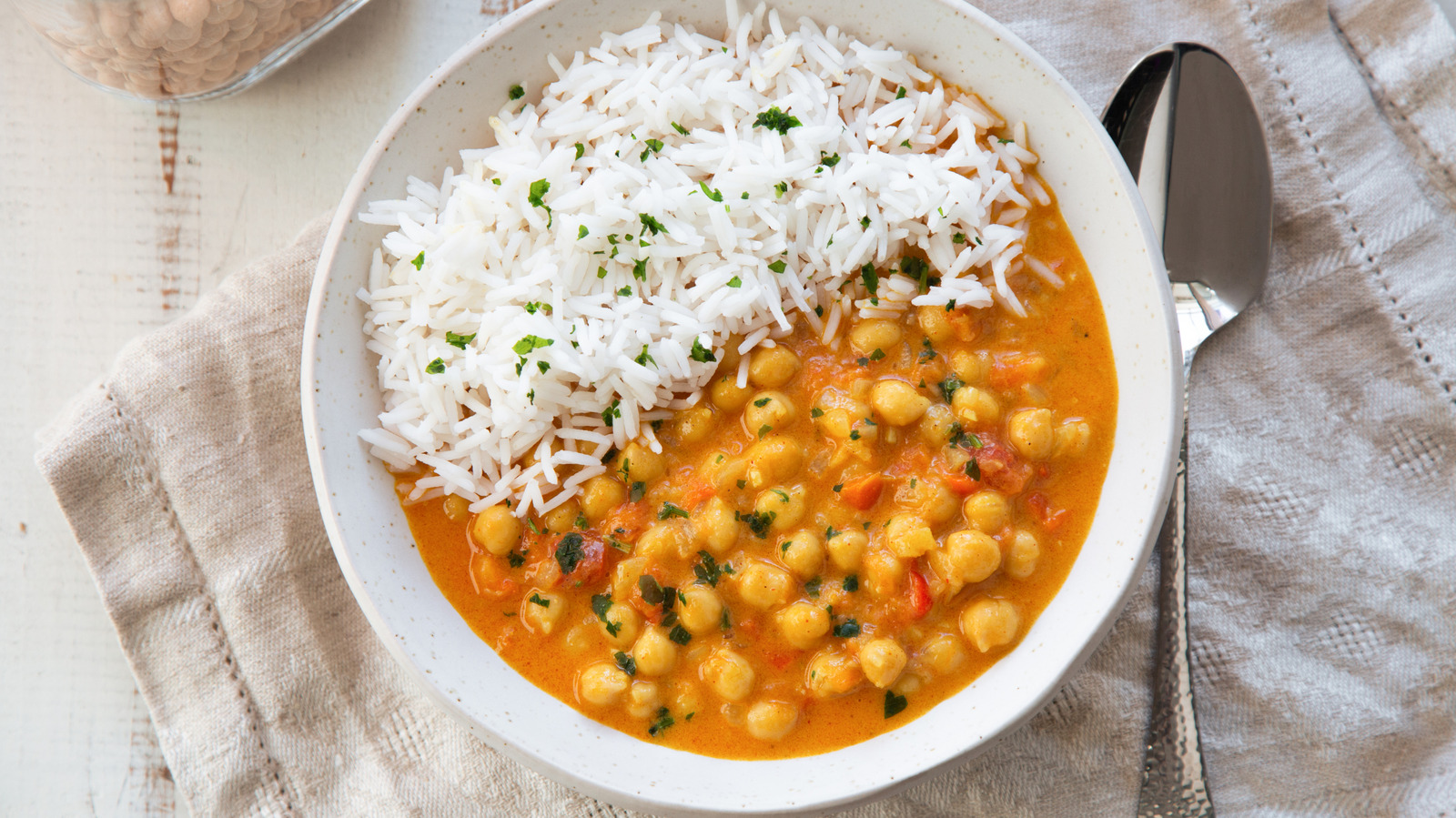We may receive a commission on purchases made from links.
So, you’re gearing up to cook a curry dish like butter chicken, a rich vegetable soup like sayur lodeh, or a rice dish like nasi lemak, and you notice your recipe calls for canned coconut milk (which has a different taste and consistency from the boxed kind). Simple enough, right? Unfortunately, there is a common mistake people make when buying coconut milk: purchasing cans with tons of added sugar.
The unspoken rule when cooking with canned coconut milk is to make sure you buy the unsweetened variety, unless the recipe explicitly calls for sweetened. And listen, we get it — it’s easy to misread labels when you’re speeding through the grocery aisle to gather all your ingredients, but this is one pernicious error that can alter your whole recipe. Even though added sugar may not seem like a big deal at first, certain canned coconut milk products can have upwards of 20 grams of sugar per serving, as much as half a dozen Chips Ahoy! chocolate chip cookies.
One of the best things about coconut milk is that it has a subtle, natural sweetness to it that can liven up any dish. It can help cut some of the heat and add flavor to Indian and Thai-inspired soups, or it can add a bit of sweetness to your coffees, smoothies, or oatmeal without you having to use extra sugar. So, when a recipe calls for canned coconut milk, it is almost always going to be referring to the “unsweetened” variety because it will be relying on the natural sugars found in coconut.
How to avoid buying sweetened coconut milk
Choosing the wrong type of coconut milk happens so frequently because of where it sits on grocery store shelves. Some of the most popular brands of unsweetened coconut milk, like Goya Leche de Coco or Thai Kitchen Coconut Milk, are almost always cozied up next to products that aren’t pure coconut milk and are instead loaded with added sugars.
Take cream of coconut, which may look similar to canned coconut milk, but is actually a thick, sugary syrup made from coconut milk and sugar. If you’re preparing a recipe that already calls for both sugar and coconut milk, like mango sago, for example, your end result would be way too sweet if you used cream of coconut. Or, you may come across something like Let’s Do Organic Sweetened Condensed Coconut Milk, which, although it still says “coconut milk,” is evaporated and contains added sugar, which, like cream of coconut, makes it much sweeter and more viscous than the original. Coconut cream, meanwhile, is just a richer version of unsweetened coconut milk that contains more coconut solids (and thus more fat), and is a suitable alternative when diluted with water.
If you aren’t sure whether a particular can has extra sugar, you can also double-check the nutrition label and ingredients list on the back. While unsweetened varieties still contain a gram or two of the sweet stuff because of coconut’s natural sugars, there shouldn’t be anything under the “added sugars” portion on the nutrition label.






